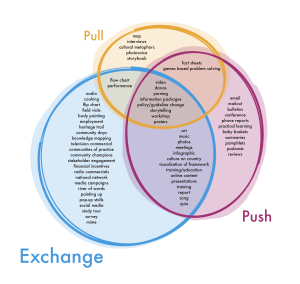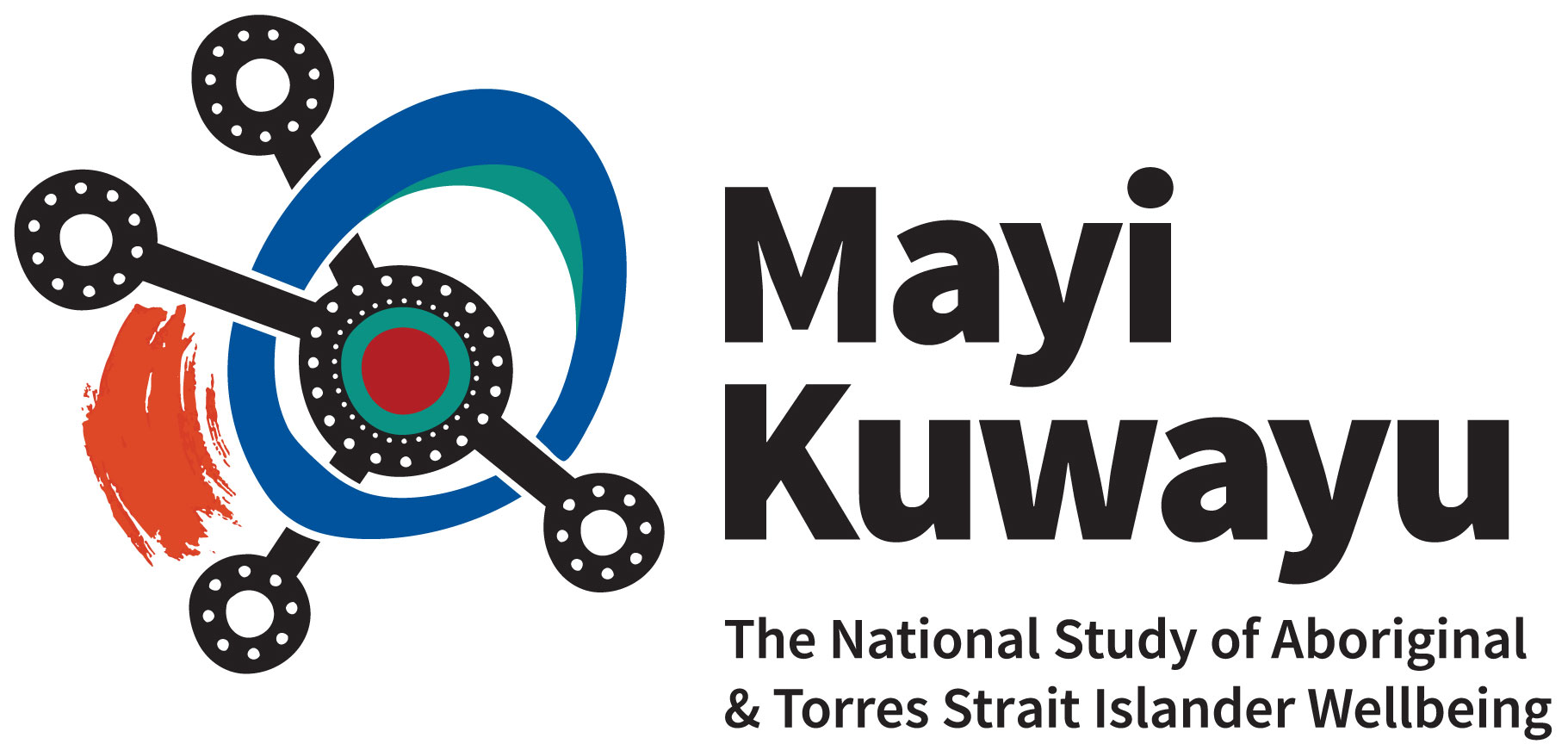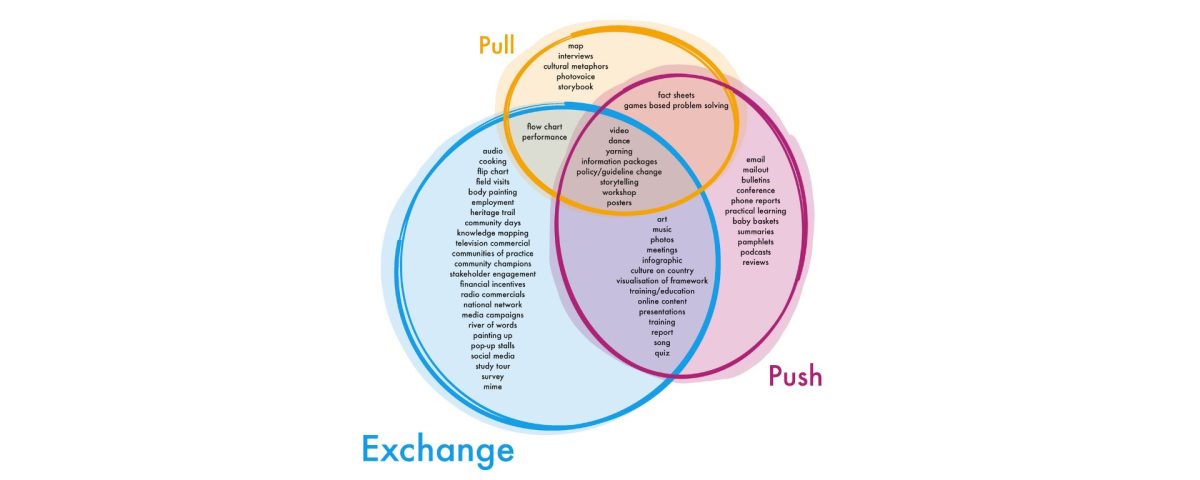Knowledge translation in Aboriginal and Torres Strait Islander research

Mayi Kuwayu Study News – Language and Wellbeing
October 23, 2024The Mayi Kuwayu team and partners have been looking to better understand how knowledge is shared with Aboriginal and Torres Strait Islander peoples in research.
What is knowledge translation?
Aboriginal and Torres Strait Islander peoples have always created, generated, shared, translated, and used knowledge within and between communities. This “knowledge translation” has always been an essential part of Indigenous lives and cultures.
There is opportunity to use this strong cultural base to incorporate Indigenous knowledge translation in research. This will help researchers to engage with knowledge translation throughout the research process, so their work can create meaningful and impactful changes for Aboriginal and Torres Strait Islander communities.
How are we currently doing knowledge translation in research?
We describe the different knowledge translation methods as:
- Push method: one-way transfer of knowledge where knowledge holders share (‘push’) knowledge with knowledge users
- Pull method: one-way transfer of knowledge where knowledge users take (‘pull’) knowledge from knowledge holders
- Exchange methods: two-way transfer of knowledge where the aim is to bring together the knowledge holders and knowledge users for an iterative transfer of knowledge.
In these different methods, our research identified many different knowledge translation mechanisms that are being used to share research knowledge with Aboriginal and Torres Strait Islander peoples.

Our research found that almost all examples of community-led knowledge translation research projects used push methods. This is aligned with cultural ways of translating knowledge because Aboriginal and Torres Strait Islander knowledge holders determine what knowledge needs to be shared with whom, and how and when this knowledge is shared.
The mechanisms ranged from academic outputs (e.g. publications, information packages) to cultural forms of knowledge translation (e.g. ceremony, dance, community days). Some mechanisms were reported on across all push, pull and exchange methods (e.g. videos, dance, yarning, workshops and information packages), while other mechanisms appeared to be method specific.
While not an exhaustive list, mechanisms presented in the figure above may be used as a starting point for researchers and participants to work together to determine what may be appropriate ways to translate knowledge for their research project.
Read the full paper here.
Acknowledgements
Authors on the paper: Makayla-May Brinckley (Wiradjuri), Sarah Bourke (Gamilaroi, Jaru and Gidja), Felecia Watkin Lui (Erub and Mabuiag), Raglan Maddox (Bagumani and Modewa Clans), Leone Malamoo (Juru and Pentecost, Epi, Tanna), Carla McGrath (Torres Strait Islander), and Raymond Lovett (Ngiyampaa/Wongaibon)
Figure creation: Maya Morton Ninomiya

